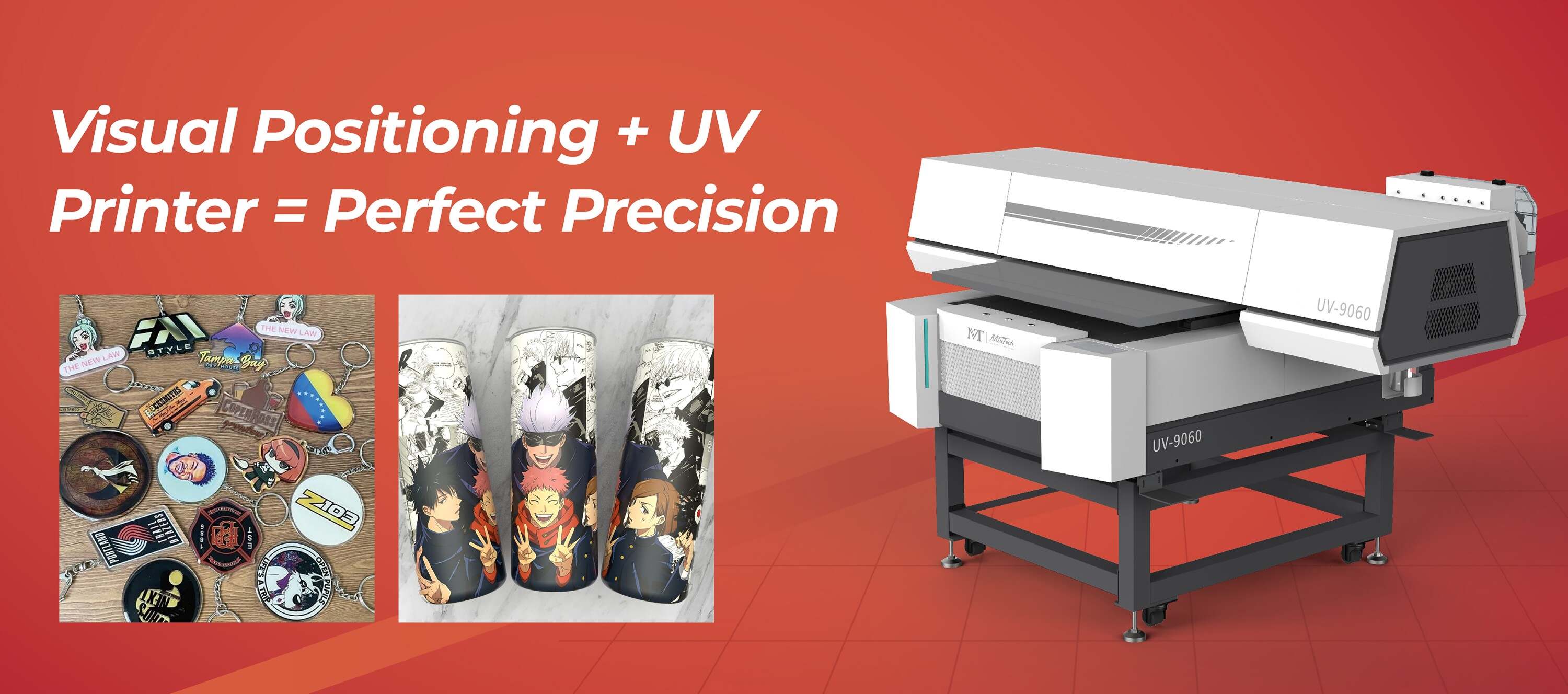Visual Positioning for Large-Format UV Printers: Scaling Accuracy
Introduction
In the rapidly evolving world of print technology, large-format UV printers are gaining prominence for their versatility and print quality. However, achieving precise positioning can be a challenge, especially when scaling images for larger formats. Visual positioning technology has emerged as a game-changer, ensuring accuracy and enhancing the functionality of these printers. This blog post will delve into the importance of visual positioning for large-format UV printers and discuss various features that contribute to scaling accuracy.
Understanding Visual Positioning
Visual positioning is a technology that leverages advanced imaging and software algorithms to align printed images with exceptional precision. Traditionally, this process involved manual adjustments and extensive testing, often leading to wasted materials and time. With visual positioning, printers can detect and correct misalignments automatically, significantly reducing errors associated with scaling and positioning.
Benefits of Visual Positioning in Large-Format UV Printing
1. Enhanced Accuracy
One of the most significant advantages of visual positioning is improved accuracy. Large-format projects often involve multiple components that must align seamlessly. Visual positioning technology uses camera systems to monitor and adjust the position of the print head in real-time, ensuring that every print is exactly where it should be.
2. Reduced Waste
Printing errors can lead to significant waste, both in terms of material and time. With precise alignment facilitated by visual positioning, the likelihood of misprints is drastically reduced. This not only saves money but also contributes to sustainable printing practices.
3. Increased Productivity
Visual positioning speeds up the setup process, allowing for faster job completion. By automating adjustments, print operators can spend less time on manual alignments and more time on productive tasks.
4. Versatility and Flexibility
The integration of visual positioning makes large-format UV printers more versatile. Whether printing banners, signage, or decorations, these printers can accurately handle a variety of materials and sizes. This flexibility is invaluable for businesses that require diverse printing solutions.
Key Features of Visual Positioning Systems
1. Camera-Based Alignment
Most visual positioning systems use high-resolution cameras to capture the printed media's position. The camera data is analyzed in real-time to ensure that the print head is aligned accurately with the media feed.
2. Software Integration
Visual positioning systems are typically integrated with advanced software that can process the images captured by cameras and make real-time adjustments. This software often features user-friendly interfaces that allow operators to monitor the alignment process effortlessly.
3. Calibration Tools
Many systems come equipped with calibration tools that ensure consistent accuracy over time. Regular calibration checks help maintain the printer’s performance, ensuring that alignment remains precise even after extended use.
4. Multi-Material Compatibility
Visual positioning technology is designed to work with a wide variety of substrates, including vinyl, canvas, and rigid materials. This capability ensures that businesses can adapt their printing processes to meet diverse client needs without compromising on quality.
Implementing Visual Positioning in Your Printing Workflow
1. Selecting the Right Equipment
When looking to implement visual positioning technology, the first step is to select the right large-format UV printer that incorporates this feature. Look for models with high-quality camera systems and robust software integration.
2. Training Your Team
Proper training is essential to ensure that your staff can leverage visual positioning effectively. Invest in training sessions that cover the use of the camera systems, software adjustments, and maintenance of the printers.
3. Regular Maintenance
To maintain accuracy over time, schedule regular maintenance for your printers. This should include calibration of visual positioning systems and routine checks on the camera and software functionalities.
4. Monitor Performance
Keep track of your printer's performance metrics. Look for patterns in alignment errors or waste reduction to assess the impact of visual positioning on your workflow.
Case Studies: Success with Visual Positioning
Many businesses have successfully integrated visual positioning technology, leading to remarkable improvements in their large-format printing capabilities. Here are a couple of instances:
·
Case Study 1: A signage company reported a 40% reduction in material waste after adopting a large-format UV printer with visual positioning. The accuracy in alignment allowed for seamless multi-layer prints.
·
·
Case Study 2: A promotional materials business increased its production speed by 30% due to the automation of alignment processes, enabling them to fulfill larger orders on tighter timelines.
·
Conclusion
Visual positioning is revolutionizing large-format UV printing by providing scalability and accuracy previously unattainable with traditional methods. Businesses that embrace this technology can expect enhanced precision, reduced waste, and increased productivity. As the demand for high-quality prints continues to grow, investing in visual positioning systems will not only elevate your printing capabilities but also set you apart from competitors. If you’re curious about how visual positioning can enhance your printing process, explore our high-quality Visual Positioning UV printers here.
FAQ
What is visual positioning in large-format UV printing?
Visual positioning refers to the use of imaging technology to ensure accurate alignment of printed images. It automates adjustments to prevent misprints and improves overall printing accuracy.
How does visual positioning reduce waste?
By ensuring accurate alignment, visual positioning decreases the likelihood of printing errors, which in turn reduces material waste and saves time on reprints.
Can visual positioning work with different materials?
Yes, visual positioning technology is designed to be compatible with various substrates, including vinyl, canvas, and rigid materials, making it versatile for different printing needs.
What should I look for in a visual positioning system?
When selecting a visual positioning system, consider features such as high-resolution camera systems, robust software integration, ease of use, and calibration tools to maintain accuracy over time.
How important is training for my team?
Training your team is crucial for effectively utilizing visual positioning technology. Proper training ensures that your staff can operate the equipment efficiently and maintain its alignment capabilities.

